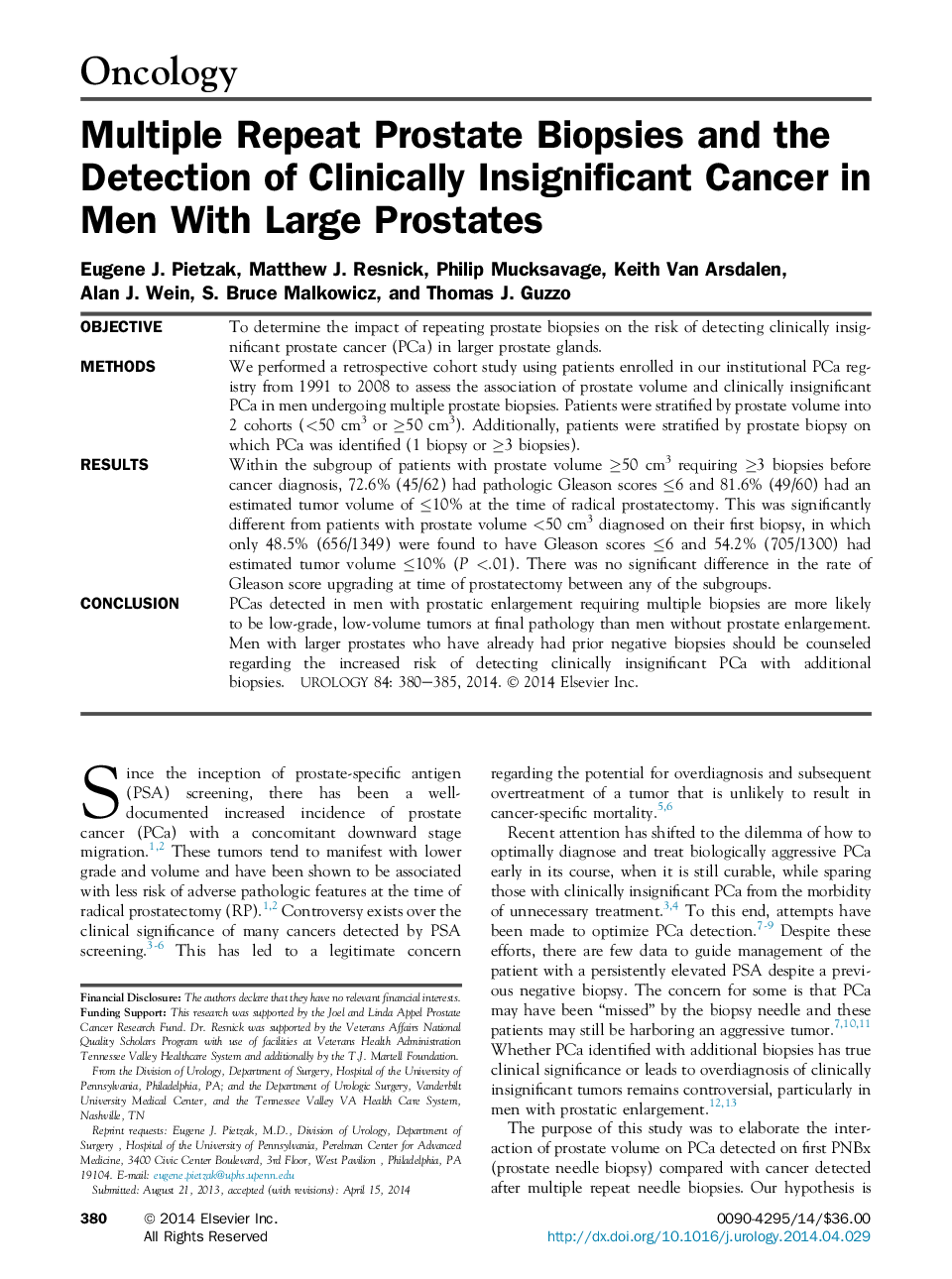| Article ID | Journal | Published Year | Pages | File Type |
|---|---|---|---|---|
| 3898581 | Urology | 2014 | 6 Pages |
ObjectiveTo determine the impact of repeating prostate biopsies on the risk of detecting clinically insignificant prostate cancer (PCa) in larger prostate glands.MethodsWe performed a retrospective cohort study using patients enrolled in our institutional PCa registry from 1991 to 2008 to assess the association of prostate volume and clinically insignificant PCa in men undergoing multiple prostate biopsies. Patients were stratified by prostate volume into 2 cohorts (<50 cm3 or ≥50 cm3). Additionally, patients were stratified by prostate biopsy on which PCa was identified (1 biopsy or ≥3 biopsies).ResultsWithin the subgroup of patients with prostate volume ≥50 cm3 requiring ≥3 biopsies before cancer diagnosis, 72.6% (45/62) had pathologic Gleason scores ≤6 and 81.6% (49/60) had an estimated tumor volume of ≤10% at the time of radical prostatectomy. This was significantly different from patients with prostate volume <50 cm3 diagnosed on their first biopsy, in which only 48.5% (656/1349) were found to have Gleason scores ≤6 and 54.2% (705/1300) had estimated tumor volume ≤10% (P <.01). There was no significant difference in the rate of Gleason score upgrading at time of prostatectomy between any of the subgroups.ConclusionPCas detected in men with prostatic enlargement requiring multiple biopsies are more likely to be low-grade, low-volume tumors at final pathology than men without prostate enlargement. Men with larger prostates who have already had prior negative biopsies should be counseled regarding the increased risk of detecting clinically insignificant PCa with additional biopsies.
